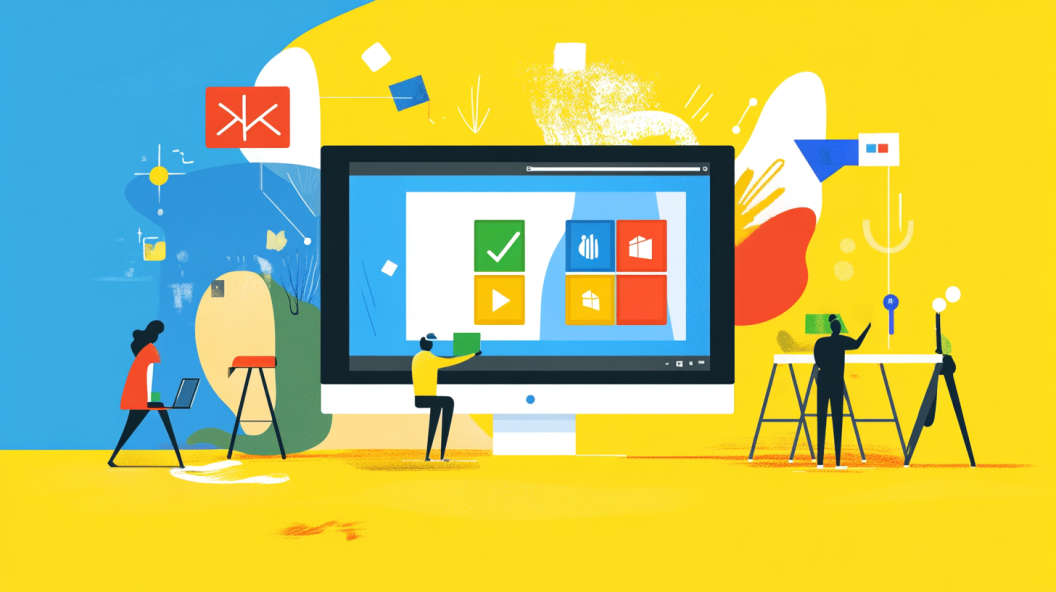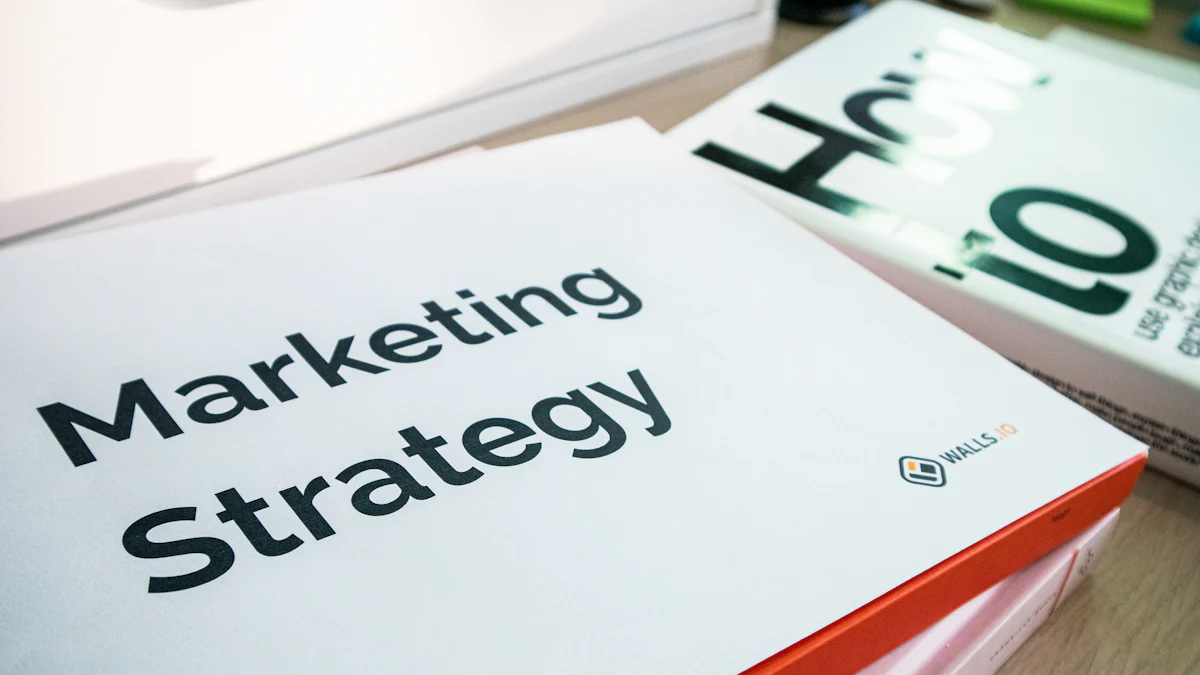Microsoft Skills Gaps: How to Fill Them Through Targeted Recruitment

You may have heard about Microsoft Skills Gaps, a pressing issue in today's tech-driven world. These gaps refer to the lack of essential skills needed to effectively use Microsoft technologies. Addressing these gaps is crucial. Without the right skills, businesses face productivity loss and innovation stagnation. A survey by the ManpowerGroup found that 69% of U.S. organizations struggle to fill jobs due to talent shortages. Targeted recruitment offers a solution. By focusing on specific skills, you can bridge these gaps and enhance your organization's performance.
Understanding Microsoft Skills Gaps

Common Skills Lacking in the Industry
In today's fast-paced tech world, you might find that certain skills are missing when it comes to Microsoft technologies. These gaps can hinder your ability to fully leverage these tools.
Technical Skills
Technical skills often top the list of Microsoft Skills Gaps. You may notice a lack of proficiency in areas like cloud computing, data analysis, and cybersecurity. These skills are crucial for maximizing the potential of Microsoft platforms. Without them, you might struggle to implement solutions effectively.
Soft Skills
Soft skills are equally important. Communication, teamwork, and problem-solving abilities can significantly impact how well you use Microsoft tools. You need these skills to collaborate and innovate, ensuring that technology serves your business goals.
Impact on Business Performance
The absence of essential skills can directly affect your business performance. Understanding this impact helps you prioritize filling these gaps.
Productivity Loss
When Microsoft Skills Gaps exist, productivity often suffers. You might find tasks taking longer than necessary, leading to delays and inefficiencies. This loss in productivity can affect your bottom line, making it essential to address these gaps promptly.
Innovation Stagnation
Innovation thrives on a skilled workforce. Without the right skills, you may experience stagnation. Your team might struggle to develop new ideas or implement innovative solutions. Regular skills gap analysis can help you identify these areas of improvement, enabling you to stay competitive.
By recognizing and addressing Microsoft Skills Gaps, you can enhance your organization's capabilities. This proactive approach not only boosts productivity but also fosters innovation, giving you a competitive edge in the industry.
The Role of Targeted Recruitment
What is Targeted Recruitment?
Definition and Purpose
Targeted recruitment focuses on attracting candidates with specific skills and qualities that align with your business needs. You narrow down your search to find individuals who fit the role and your company culture. This approach ensures you bring in talent that can thrive and contribute positively.
Benefits Over Traditional Recruitment
Targeted recruitment offers several advantages:
Efficiency: You save time by focusing on candidates who meet your criteria.
Quality: You attract individuals with the exact skills you need.
Cultural Fit: You find candidates who align with your company values.
The Christopher Group, experts in HR Executive Search, emphasize that targeted recruitment helps you find employees who will excel in their roles and enhance your company culture.
Aligning Recruitment with Business Needs
Identifying Key Skills
To align recruitment with your business needs, start by identifying the key skills required for success. Analyze your current team and pinpoint gaps. This analysis helps you focus on what your organization truly needs.
Customizing Job Descriptions
Once you identify the skills, customize your job descriptions. Clearly outline the specific skills and experiences you seek. This clarity attracts the right candidates and sets clear expectations from the start.
By adopting targeted recruitment, you ensure that your hiring process aligns with your strategic goals. This approach not only fills Microsoft skills gaps but also strengthens your team’s overall capabilities.
Strategies for Effective Targeted Recruitment
Leveraging Technology
AI and Machine Learning
You can enhance your recruitment process by using AI and machine learning. These technologies help you quickly sift through applications, identifying the most suitable candidates. Candidate Screening Tools use AI algorithms to reduce your initial screening workload. This efficiency allows you to focus on engaging with top talent.
Recruitment Platforms
Recruitment platforms offer powerful tools for finding and connecting with potential candidates. Talent Sourcing Tools use advanced search algorithms and social media integration. These features enable you to proactively search for candidates who match your specific needs. By leveraging these platforms, you streamline your recruitment efforts and reach a wider pool of qualified applicants.
Building a Strong Employer Brand
Company Culture
Your company culture plays a crucial role in attracting the right talent. Highlighting your values and work environment helps candidates see if they align with your organization. Recruitment technology like Appical connects candidates with current employees during the 'pre-boarding' phase. This connection provides insights into your company's culture, making it more appealing to potential hires.
Employee Testimonials
Employee testimonials offer authentic insights into your workplace. Encourage your team to share their experiences and successes. These stories build trust and showcase your company as a desirable place to work. Prospective candidates often look for genuine feedback from current employees, so these testimonials can be a powerful tool in your recruitment strategy.
By implementing these strategies, you create a more effective and engaging recruitment process. Leveraging technology and building a strong employer brand ensures you attract and retain the talent needed to fill Microsoft skills gaps.
Identifying and Attracting the Right Talent

Creating a Candidate Persona
To attract the right talent, you need to create a detailed candidate persona. This persona represents the ideal candidate for your organization. It helps you focus your recruitment efforts on individuals who possess the necessary skills and fit well within your company culture.
Skills and Experience
Start by identifying the specific skills and experience your ideal candidate should have. Consider the technical and soft skills required for the role. For example, if you're looking for someone to fill a Microsoft-related position, you might prioritize skills in cloud computing or data analysis. Clearly defining these skills ensures you target candidates who can meet your organization's needs.
Cultural Fit
Cultural fit is equally important when creating a candidate persona. You want someone who aligns with your company's values and work environment. Think about the qualities that make someone successful in your organization. Do they need to be collaborative, innovative, or adaptable? By understanding these traits, you can attract candidates who will thrive in your company culture.
Sourcing Channels
Once you've created a candidate persona, it's time to explore sourcing channels. These channels help you find and connect with potential candidates who match your criteria.
Online Platforms
Online platforms offer a vast pool of candidates. Use job boards, professional networks, and social media to reach out to potential hires. Platforms like LinkedIn allow you to search for candidates based on specific skills and experiences. You can also post job openings and engage with candidates directly. This approach broadens your reach and increases your chances of finding the right talent.
Networking Events
Networking events provide valuable opportunities to meet potential candidates face-to-face. Attend industry conferences, workshops, and meetups to connect with professionals in your field. These events allow you to engage with candidates in a more personal setting. You can discuss your organization's goals and values, making it easier to identify individuals who align with your needs.
By creating a candidate persona and utilizing effective sourcing channels, you enhance your ability to identify and attract the right talent. This strategic approach ensures you fill Microsoft skills gaps with individuals who possess the necessary skills and fit seamlessly into your company culture.
Interviewing and Selection Process
Structured Interviews
Structured interviews play a vital role in the selection process. They help you evaluate candidates consistently and fairly. By preparing a set of questions in advance, you ensure that each candidate receives the same opportunity to demonstrate their skills and fit for the role.
Behavioral Questions
Behavioral questions focus on past experiences. They reveal how candidates have handled situations similar to those they might face in your organization. For example, you might ask, "Can you describe a time when you had to solve a complex problem using Microsoft tools?" This question helps you assess their problem-solving abilities and technical proficiency.
Technical Assessments
Technical assessments test a candidate's specific skills. You can use these assessments to evaluate their ability to perform tasks relevant to the job. For instance, if you're hiring for a role that requires expertise in Microsoft Azure, you might include a practical test on cloud computing. These assessments provide a clear picture of a candidate's capabilities.
Collaborative Decision Making
Collaborative decision making involves your team in the selection process. It ensures that you choose candidates who not only meet the technical requirements but also fit well within your team dynamics.
Involving Team Members
Involving team members in interviews offers diverse perspectives. Each team member can focus on different aspects of the candidate's skills and personality. This approach helps you gather comprehensive feedback and make informed decisions. HR professionals emphasize the importance of criteria development for fair selection, ensuring that all team members evaluate candidates based on the same standards.
Consensus Building
Consensus building is crucial for making final hiring decisions. After interviews, gather your team to discuss their impressions and insights. Encourage open dialogue and consider everyone's opinions. This collaborative approach leads to a well-rounded decision, increasing the likelihood of selecting the right candidate. As noted by The Christopher Group, targeted recruiting improves the quality of applicants, making consensus building even more effective.
By implementing structured interviews and collaborative decision making, you enhance your selection process. These strategies ensure that you choose candidates who possess the necessary skills and align with your company culture, effectively filling Microsoft skills gaps.
Onboarding and Retention
Effective Onboarding Practices
A strong onboarding process sets the stage for new hires to succeed. You can significantly boost retention and productivity by focusing on comprehensive onboarding.
Training Programs
Training programs play a crucial role in onboarding. You should provide new employees with the necessary skills and knowledge to perform their roles effectively. Consider offering a mix of online courses, workshops, and hands-on training sessions. This approach ensures that new hires feel confident and prepared to tackle their responsibilities.
Mentorship Opportunities
Mentorship opportunities enhance the onboarding experience. Pairing new employees with experienced mentors helps them navigate the company culture and build valuable relationships. Mentors offer guidance, answer questions, and provide support during the transition period. This connection fosters a sense of belonging and encourages new hires to stay engaged and committed.
Research by the Brandon Hall Group highlights that organizations with a robust onboarding process see an 82% improvement in new hire retention and a 70% increase in productivity.
Retention Strategies
Retaining skilled employees is vital for closing Microsoft skills gaps. You can achieve this by implementing effective retention strategies.
Career Development
Career development opportunities motivate employees to stay with your organization. You should offer clear paths for advancement and growth. Encourage employees to set career goals and provide resources to help them achieve these objectives. Regular performance reviews and feedback sessions keep employees informed about their progress and potential career paths.
Employee Engagement
Employee engagement is key to retention. You should create a positive work environment where employees feel valued and appreciated. Organize team-building activities, recognize achievements, and encourage open communication. Engaged employees are more likely to remain loyal and contribute to your organization's success.
According to Harvard Business Review, the most effective organizations onboard new hires throughout their first year, focusing on organizational, technical, and social dimensions. This integrated approach enables employees to thrive and remain committed.
By prioritizing effective onboarding and retention strategies, you ensure that your organization attracts and retains top talent. This approach not only fills Microsoft skills gaps but also strengthens your workforce, driving long-term success.
Measuring Success and Continuous Improvement
Key Performance Indicators
To ensure your recruitment efforts effectively fill Microsoft skills gaps, you need to measure success through key performance indicators (KPIs). These metrics provide valuable insights into the efficiency and impact of your recruitment strategies.
Recruitment Metrics
Recruitment metrics help you evaluate the effectiveness of your hiring process. Focus on metrics such as:
Time to Fill: Measure the time it takes to fill crucial positions. A shorter time indicates a more efficient recruitment process.
Cost per Hire: Track the expenses associated with hiring new employees. Reducing this cost demonstrates a more streamlined approach.
Quality of Hire: Assess the performance and retention of new hires. High-quality hires contribute positively to your organization.
Implementing a targeted recruitment plan can significantly improve these metrics. By narrowing down advertising efforts and focusing on specific candidates, you reduce the time positions stay open and lower hiring costs.
Employee Performance
Employee performance is another critical KPI. Evaluate how well new hires meet job expectations and contribute to your organization's goals. Consider:
Productivity Levels: Monitor the output and efficiency of new employees. Increased productivity indicates successful recruitment.
Skill Utilization: Assess how effectively employees use their skills in their roles. Proper skill utilization suggests that you have filled the skills gaps.
Regularly reviewing these KPIs helps you understand the impact of your recruitment strategies and make necessary adjustments.
Feedback and Adaptation
Continuous improvement requires feedback and adaptation. By gathering insights from various sources, you can refine your recruitment process and address any shortcomings.
Regular Reviews
Conduct regular reviews of your recruitment strategies. Gather feedback from hiring managers, team members, and new hires. Consider questions like:
What aspects of the recruitment process worked well?
Where can improvements be made?
How do new hires perceive their onboarding experience?
These reviews provide valuable information for enhancing your recruitment efforts.
Adapting Strategies
Adapt your strategies based on the feedback received. If certain sourcing channels yield better candidates, focus more on those. If structured interviews prove effective, continue refining them. Flexibility in your approach ensures that you remain responsive to changing needs and industry trends.
The Christopher Group highlights the importance of adapting recruitment strategies to improve the quality of applicants. By continuously refining your approach, you enhance your ability to fill Microsoft skills gaps effectively.
By measuring success through KPIs and embracing feedback, you create a dynamic recruitment process. This approach not only fills skills gaps but also strengthens your organization's overall capabilities, ensuring long-term success.
Filling Microsoft skills gaps is crucial for your organization's success. These gaps can hinder productivity and innovation. By focusing on targeted recruitment, you attract candidates with the specific skills needed to excel. This approach improves the quality of applicants, ensuring you bring in highly qualified individuals. Regular evaluation and adaptation of your recruitment strategies are essential. Continuously assess your methods and make necessary adjustments. This proactive stance keeps your organization competitive and capable of meeting evolving demands. Embrace these strategies to enhance your workforce and drive long-term success.
See Also
How to Draw in Premier Microsoft Talent for Your Company
Key Factors Microsoft Specialists Seek in a Fresh Position
Strategies for Hiring Microsoft Power BI Specialists for Data Teams
Lucrative Microsoft Positions and Tips for Securing Them
Benefits of Collaborating with a Microsoft-Focused Recruiter
